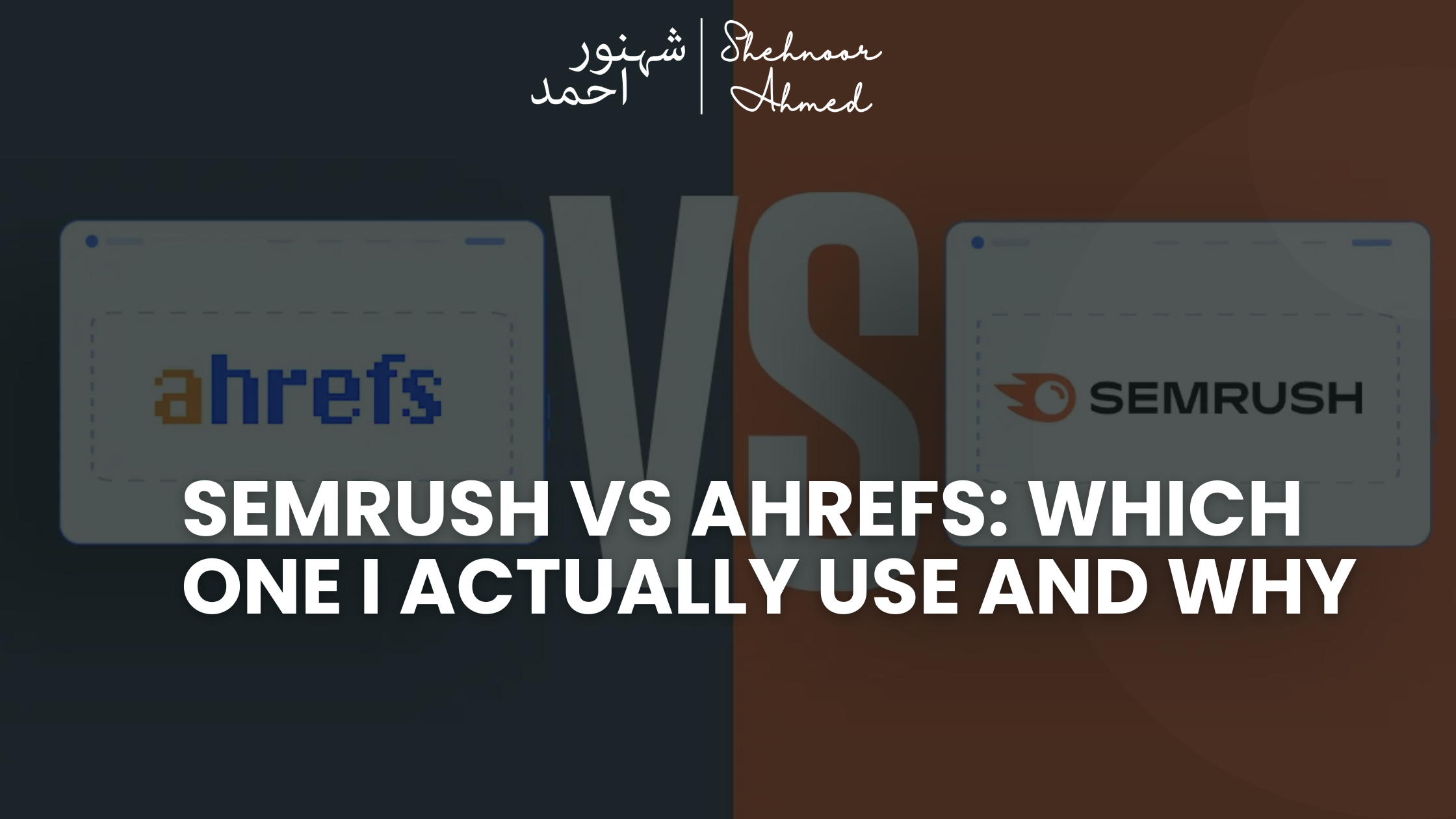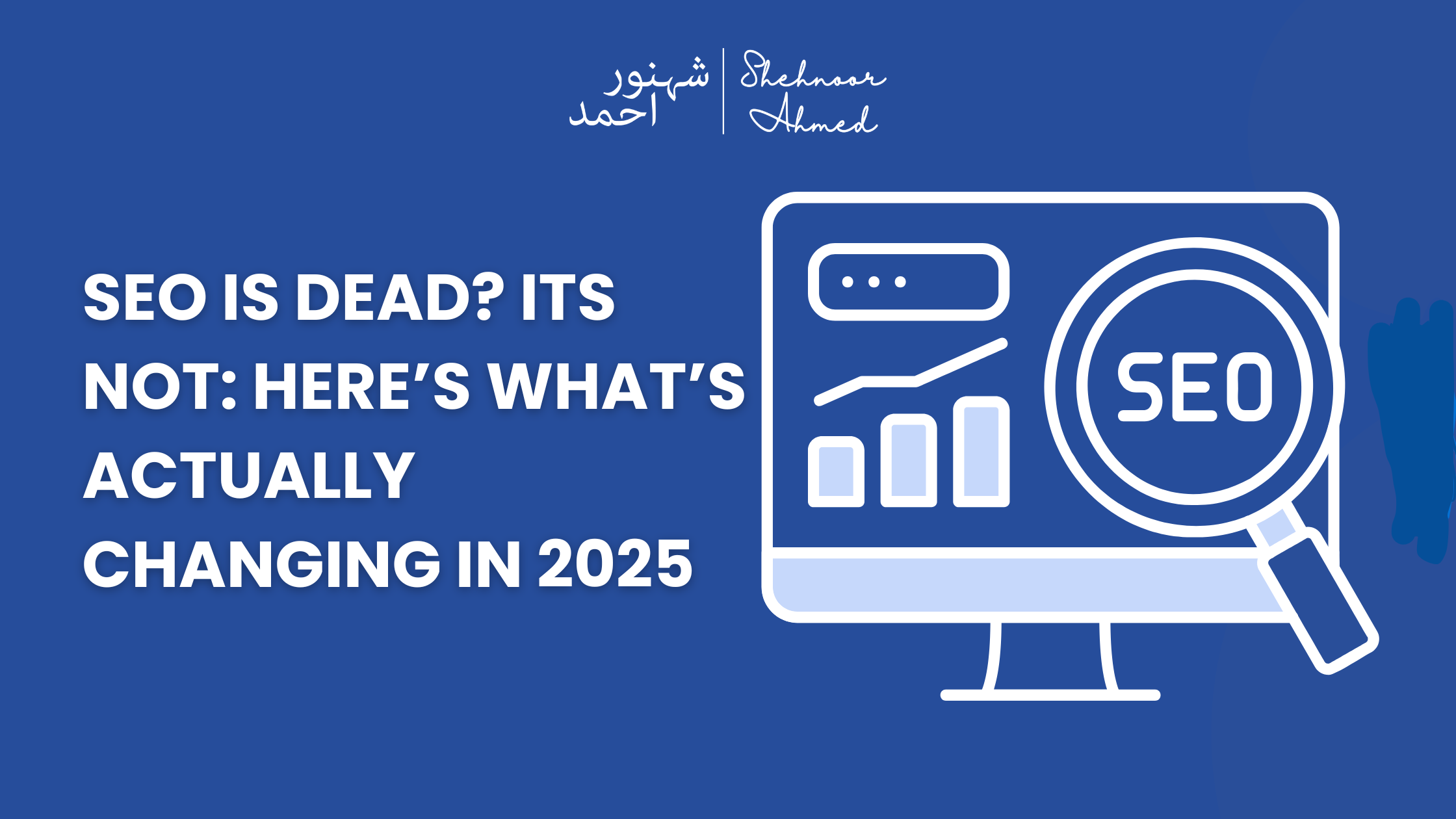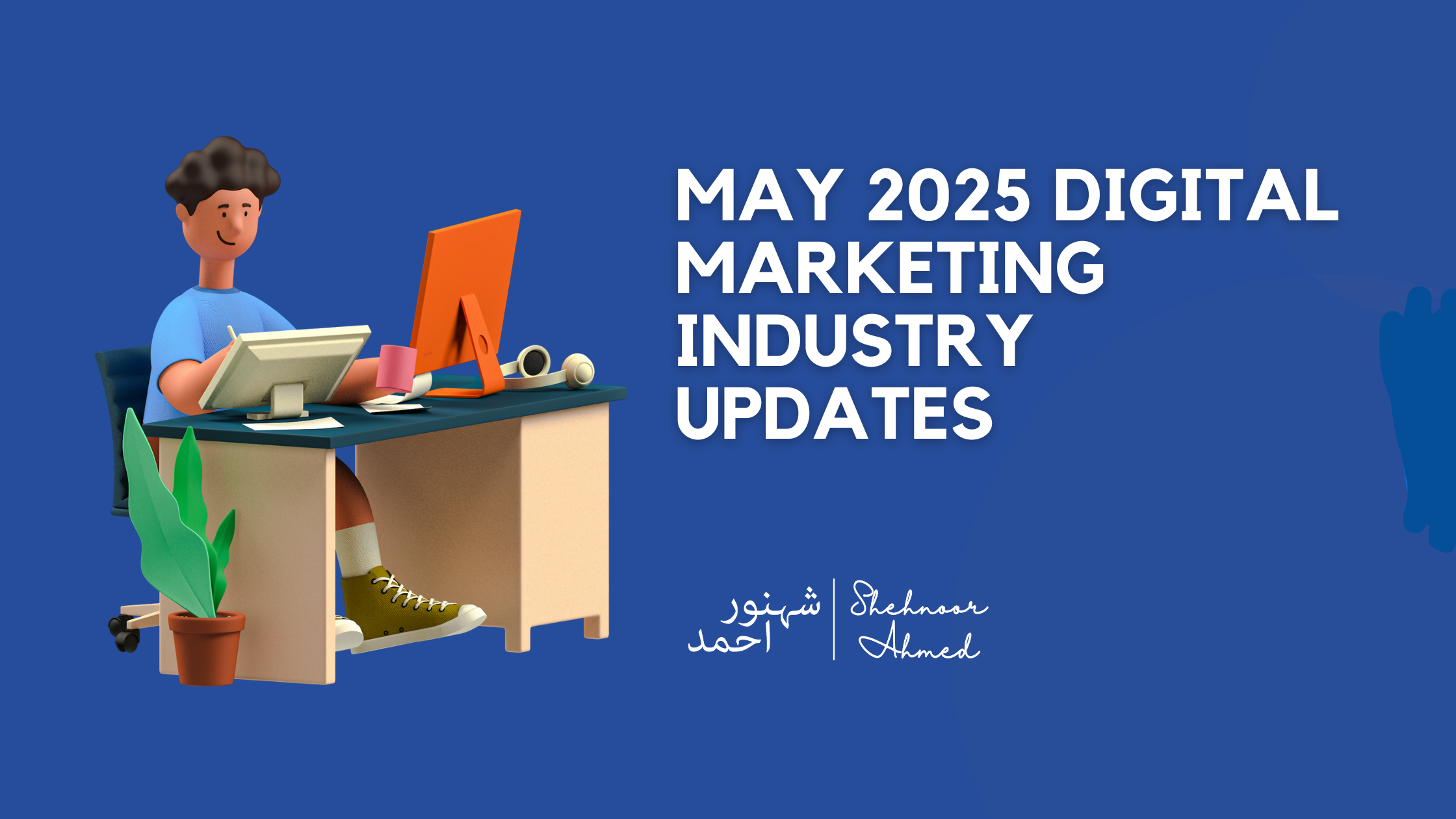
SEMrush vs Ahrefs: Which One I Actually Use and Why
Most people lump SEMrush vs Ahrefs into the same category. “SEO tools. Pick one. Doesn’t matter.” I used to believe that too,until I actually had to use them. Every. Single. Day. Not for blog posts. Not for tutorials. For real campaigns with real clients who don’t care about dashboards, they want traffic. Results. Revenue. That’s when I realized: These tools aren’t built the same. And in 2025, the gap matters more than ever. Why People Compare SEMrush VS Ahrefs (But Miss the Real Point) On paper, they look the same: keywords, backlinks, rankings, audits, check, check, check. But use them daily, and you’ll feel it. SEMrush acts like a campaign planner. Ahrefs feels like a clean lab report. Different vibes. Different results. I didn’t really notice until I ran them side-by-side for a launch project. Same site, different tools, wildly different insights. What’s Changed in SEO, and Why Tool Choice Matters More Now Search engines aren’t as simple as they used to be. Rankings move fast. Pages rise and fall based on how complete your coverage is, not just how many keywords you’ve added. Building authority now means knowing what topics to cover, how deep to go, and how to connect your pages. That’s hard to do with a tool that only shows keywords or backlinks. You need a tool that shows how visible your content is, how strong your internal structure looks, and what your competitors are winning with. That’s why choosing the right one is no longer optional. It’s strategy. SEMrush: What It Does Well and Where It Slows Down A Solid Choice for Content and Planning SEMrush is great when you’re working on a content campaign. Its keyword tools are detailed, and the Topic Research tool helps build out page clusters that reflect how people search. I’ve used SEMrush to build entire service page plans for clients in local markets, finding gaps their competitors didn’t even realize were there. It’s also helpful when pitching. The SEMrush keyword gap charts and domain comparisons are clean and easy to explain. Interface Can Be Too Much If you’re new to SEO or like a clean workspace, SEMrush might feel overwhelming. There’s a lot packed into every menu. It’s powerful, but takes some getting used to. Rank Tracking Is More Useful SEMrush has improved its visibility tracking. You don’t just see positions; you see how often your content is showing up, what type of results it’s appearing in, and how consistent those rankings are across locations. In one case, switching a client’s tracking to SEMrush helped us catch an early drop in visibility before traffic dropped. That alone made the switch worth it. Ahrefs: Strengths and Where It Falls Behind Still the Best for Link Data Ahrefs does backlinks better than anyone. Whether it’s finding toxic links, competitor link sources, or domain-wide patterns, it’s fast and reliable. I use it almost every week to clean up new client profiles and to understand why certain competitors are ranking above others. In one campaign, we cut out 40% of junk links and saw ranking improvements across 12 pages. That came from Ahrefs. Great for Research, Less for Campaigns The Content Explorer tool is underrated. It helps you see which types of content are working in your niche. You get link metrics, traffic estimates, and historical performance. Ahrefs? Killer for links, but planning content? I’ve tried. I just end up back in SEMrush every time. It’s more reactive, good for checking what exists, but not ideal for mapping what to build next. Rank Tracking Isn’t as Sharp Ahrefs’ rank tracking is fine, but it doesn’t update as often or show as many layers. You don’t always see shifts in visibility or featured placements. If you’re running tight campaigns or watching high-stakes keywords, that’s a problem. Which One I Use and Why These days, SEMrush is my main tool. It’s open on my second monitor almost 24/7. Ahrefs? I still have it, but it’s like that friend who’s great at one thing and lost at everything else. I use it for backlink stuff. That’s it. SEMrush gives me structure. Topic clusters. Early warning signs when visibility dips. Basically, the stuff that keeps my campaigns sharp. Ahrefs steps in when I need to clean up bad links or reverse-engineer a competitor’s weird rise in rankings. Where Both Fall Short, and How I Work Around It Weak on Topic Relationships Neither tool maps topics deeply. They show keywords, not meaning. So I use spreadsheets, Airtable, and sometimes third-party schema tools to manually map relationships between content pieces. Cost and Limits SEMrush adds up quickly when you add more seats or reports. Ahrefs charges per export and API call. If you’re running reports across clients, this can add up fast. So I limit how often I export, and I build custom dashboards for reporting instead. Which One Fits You Best in 2025? Final Words: There’s no “winner” here. The right tool depends on how you work. If you manage content, build clusters, and care about visibility over time, SEMrush will feel more useful. If you audit sites, care about backlinks, and want clean data fast, Ahrefs will get you there. If someone told me I could only keep one tool starting tomorrow, I wouldn’t even blink. It’s SEMrush. It fits how I think, plan, and deliver results. The rest? I can work around it. Want to See How I Use These Tools on Real Campaigns? Get in touch. I can walk you through how I use these tools on live projects, what I track, and how I connect the data to real growth. Contact Shehnoor Ahmedhello@shehnoorahmed.com Book 1:1 Session FAQs Do I need both SEMrush and Ahrefs?You don’t need both. But if you manage both content and backlinks, having both helps. Which tool is better for content planning?SEMrush. Its tools are built for that. Which is more accurate for backlinks?Ahrefs. No one else comes close. Can these tools help with local SEO?Yes. SEMrush is better for location












